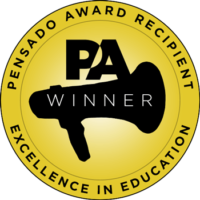Please fill out the following information, and RRFC Admissions will contact you to discuss our program offerings:
Issue #206
by Liya Swift
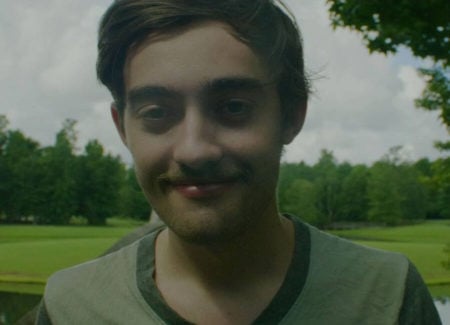 It is with heavy hearts and deep sadness that we remember David Thor Swanson, a Film Connection student who passed away suddenly on March 7th, 2018 from complications arising from diabetes.
We recently spoke with David’s parents Deborah and Glenn Swanson as well as his mentors, Drew Hall, Jeff Worley, and screenwriting mentor Ron Peterson, so that we could share our memories of the young aspiring filmmaker and celebrate his life and passion for film.
By the time David Thor Swanson joined Film Connection, he’d spent a lifetime reading, learning, and absorbing everything he could about the art of filmmaking and the industry in which he would make his mark.
His mother Deborah says, “That was his whole passion. Since he was a little child he would memorize films, he would memorize cartoons, he would memorize the previews before the movies. He read books about all the directors, producers, actors and actresses, and scriptwriters…He would throw out names of producers and directors. He knew every film they ever did, the camera angles they used and why they used that camera angle…This was just his passion, and he wanted to write plays and he wanted to write movie scripts, and he talked about being a director.”
Speaking of his son’s talent as a visionary writer, Glenn says, “He would be awake at all hours of the night writing, and was a voracious reader…He’s literally got thousands of pages of writing. I came across something where he was talking about his movie, and it was based on his conception that graffiti is actually an underrated art form that’s been somehow taken over by mass production now. He had a whole page on just graffiti and how this movie came about.”
David had recently completed the final draft of that screenplay Graffiti Sharks under the direction of screenwriting mentor Ron Peterson. During his apprenticeship with Ron he trekked the long journey from idea to page, and ultimately delivered a compelling project and pitch that was ready to go. Speaking of the time they spent working on the project David referred to as “Enemy of the State meets Diva,” Ron says, “I told him the real writers don’t give up. He stayed with it and we worked, and he eventually got the hang of it…At the end, he did it. He finished that screenplay, he got it down, we got the one-pager, he went through the beginning, middle, and end. And I said ‘That’s how you write a screenplay. You battle through it’ and he did it.”
While apprenticing at Frame 29 Films with Drew Hall and his production partner Jeff Worley in Mobile, Alabama. David was able to put much of what he’d read in books into practice. He quickly became “one of the guys” who often dropped in even when he wasn’t on schedule. He also became a regular addition to their web series CRFTSHO, where he got the nickname “Dawson.” Even for the team of seasoned pros who worked with him, his passion for filmmaking was downright contagious, his knowledge impressive.
Jeff remembers the jolt of energy he and Drew got from working with David. “He provided a big spark to both of us… That’s kind of what CRFTSHO came out of, just so we could get some type of spark. Dawson coming in really made that spark happen for us.”
Drew says, “David and I would talk about films, and I would talk about shooting film because I grew up on the film side of things before digital was a big deal. He knew about filmmaking, like the word ‘film’ meaning what it means, not just digital filmmaking…He understood that better than anybody I’ve ever met.”
The young apprentice even became the driving force behind numerous projects including a Panasonic job which Drew and Jeff decided to turn into a narrative project, partly in order to put David’s writing and direction skills to the test. Drew says, “We spent all of the money we could on the set, the production design, and travel in order to make it a narrative so David would have a chance to learn more about filmmaking…I was like, ‘Well, he’s done these commercials, but let’s give him a taste of a film set.’ The stunt actor we hired has some of the biggest credits in Hollywood right now…”
Drew recalls David jumping right in, undaunted “shooting his very first thing on a $73,000 piece of glass, and he’s just playing out there like the rest of us, and he gets it and he understands the framing, and pretty soon I’m just working as DP, I’m not doing anything more than letting him dictate the shot, and I’m consulting with him on a professional film set level of, ‘Well, if we do this we can create this, and here’s the lighting element,’ and he would challenge me on that.
David got onto the set with real players and held his own and did it…He just rolled in and made thing happen. It doesn’t make any sense, but he understood exactly what to do and he did it with as much professionalism and charisma without ever once really making a mistake. Even being the greenest person on the set, the kid still had knowledge and he would challenge the shots. It was insane, and in post he was questioning all the right things the director should question, not the editors… David has a full writing credit on that. Not a gratuitous writing credit. David has a legitimate credit. To me it’s always going to be a very big deal. One of the greatest joys of my life will always be that project.”
That first paycheck and writing credit meant a great deal to David, who framed his check after he’d deposited it electronically. His father Glenn says, “He was always so proud that he had actual credits, that he was the writer.” Today, it hangs on the wall of the CRFTSHO office.
His mother Deborah continues, “Every person that has known David has said that he was an old soul. When David was just a toddler, he used to tell us that he was born at 26, and he was just waiting to catch up.” Glenn adds, “He was compassionate, he would talk to strangers and make them feel better just on a whim. [And] he was proud of his Norse heritage. We named him David Thor, and he would always tell people that he was David Thor Swanson.”
Drew then shares the statement which steels everyone’s desire to ensure David’s name and passion for the art lives on: “His love of film was so broad, so deep, and so real that, you know, aside from the Earth missing him and his family and friends missing him, the film universe is going to miss David.”
Glenn and Deborah hope to see Graffiti Sharks produced. In doing so, they can help fulfill David’s dream of seeing his screenplay actualized into a full-fledged movie.
Inquiries about David’s movie may be made directly to our office.
It is with heavy hearts and deep sadness that we remember David Thor Swanson, a Film Connection student who passed away suddenly on March 7th, 2018 from complications arising from diabetes.
We recently spoke with David’s parents Deborah and Glenn Swanson as well as his mentors, Drew Hall, Jeff Worley, and screenwriting mentor Ron Peterson, so that we could share our memories of the young aspiring filmmaker and celebrate his life and passion for film.
By the time David Thor Swanson joined Film Connection, he’d spent a lifetime reading, learning, and absorbing everything he could about the art of filmmaking and the industry in which he would make his mark.
His mother Deborah says, “That was his whole passion. Since he was a little child he would memorize films, he would memorize cartoons, he would memorize the previews before the movies. He read books about all the directors, producers, actors and actresses, and scriptwriters…He would throw out names of producers and directors. He knew every film they ever did, the camera angles they used and why they used that camera angle…This was just his passion, and he wanted to write plays and he wanted to write movie scripts, and he talked about being a director.”
Speaking of his son’s talent as a visionary writer, Glenn says, “He would be awake at all hours of the night writing, and was a voracious reader…He’s literally got thousands of pages of writing. I came across something where he was talking about his movie, and it was based on his conception that graffiti is actually an underrated art form that’s been somehow taken over by mass production now. He had a whole page on just graffiti and how this movie came about.”
David had recently completed the final draft of that screenplay Graffiti Sharks under the direction of screenwriting mentor Ron Peterson. During his apprenticeship with Ron he trekked the long journey from idea to page, and ultimately delivered a compelling project and pitch that was ready to go. Speaking of the time they spent working on the project David referred to as “Enemy of the State meets Diva,” Ron says, “I told him the real writers don’t give up. He stayed with it and we worked, and he eventually got the hang of it…At the end, he did it. He finished that screenplay, he got it down, we got the one-pager, he went through the beginning, middle, and end. And I said ‘That’s how you write a screenplay. You battle through it’ and he did it.”
While apprenticing at Frame 29 Films with Drew Hall and his production partner Jeff Worley in Mobile, Alabama. David was able to put much of what he’d read in books into practice. He quickly became “one of the guys” who often dropped in even when he wasn’t on schedule. He also became a regular addition to their web series CRFTSHO, where he got the nickname “Dawson.” Even for the team of seasoned pros who worked with him, his passion for filmmaking was downright contagious, his knowledge impressive.
Jeff remembers the jolt of energy he and Drew got from working with David. “He provided a big spark to both of us… That’s kind of what CRFTSHO came out of, just so we could get some type of spark. Dawson coming in really made that spark happen for us.”
Drew says, “David and I would talk about films, and I would talk about shooting film because I grew up on the film side of things before digital was a big deal. He knew about filmmaking, like the word ‘film’ meaning what it means, not just digital filmmaking…He understood that better than anybody I’ve ever met.”
The young apprentice even became the driving force behind numerous projects including a Panasonic job which Drew and Jeff decided to turn into a narrative project, partly in order to put David’s writing and direction skills to the test. Drew says, “We spent all of the money we could on the set, the production design, and travel in order to make it a narrative so David would have a chance to learn more about filmmaking…I was like, ‘Well, he’s done these commercials, but let’s give him a taste of a film set.’ The stunt actor we hired has some of the biggest credits in Hollywood right now…”
Drew recalls David jumping right in, undaunted “shooting his very first thing on a $73,000 piece of glass, and he’s just playing out there like the rest of us, and he gets it and he understands the framing, and pretty soon I’m just working as DP, I’m not doing anything more than letting him dictate the shot, and I’m consulting with him on a professional film set level of, ‘Well, if we do this we can create this, and here’s the lighting element,’ and he would challenge me on that.
David got onto the set with real players and held his own and did it…He just rolled in and made thing happen. It doesn’t make any sense, but he understood exactly what to do and he did it with as much professionalism and charisma without ever once really making a mistake. Even being the greenest person on the set, the kid still had knowledge and he would challenge the shots. It was insane, and in post he was questioning all the right things the director should question, not the editors… David has a full writing credit on that. Not a gratuitous writing credit. David has a legitimate credit. To me it’s always going to be a very big deal. One of the greatest joys of my life will always be that project.”
That first paycheck and writing credit meant a great deal to David, who framed his check after he’d deposited it electronically. His father Glenn says, “He was always so proud that he had actual credits, that he was the writer.” Today, it hangs on the wall of the CRFTSHO office.
His mother Deborah continues, “Every person that has known David has said that he was an old soul. When David was just a toddler, he used to tell us that he was born at 26, and he was just waiting to catch up.” Glenn adds, “He was compassionate, he would talk to strangers and make them feel better just on a whim. [And] he was proud of his Norse heritage. We named him David Thor, and he would always tell people that he was David Thor Swanson.”
Drew then shares the statement which steels everyone’s desire to ensure David’s name and passion for the art lives on: “His love of film was so broad, so deep, and so real that, you know, aside from the Earth missing him and his family and friends missing him, the film universe is going to miss David.”
Glenn and Deborah hope to see Graffiti Sharks produced. In doing so, they can help fulfill David’s dream of seeing his screenplay actualized into a full-fledged movie.
Inquiries about David’s movie may be made directly to our office.
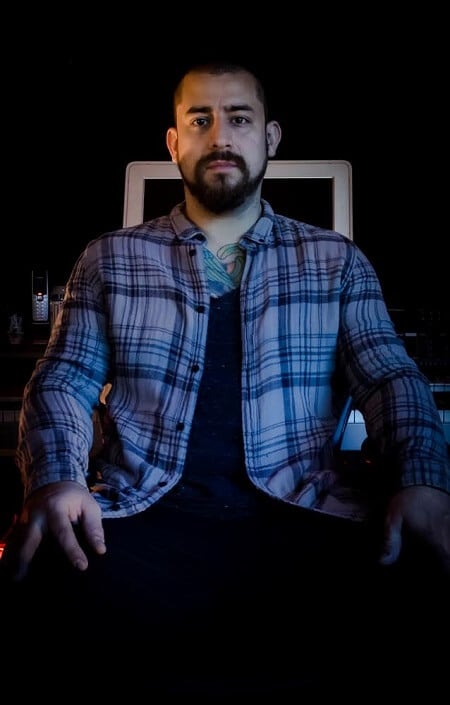 Josh “iGLOo” Monroy began his career in Atlanta where he worked with artists Elton John, Shinedown, Justin Bieber, OutKast, The Notorious B.I.G. and helmed the post of head engineer of The LudaPlex, Ludacris’ private production studio where he earned numerous platinum and gold certified records including one for Justin Bieber’s “Baby” and a Grammy for Rap Album of the Year with Ludacris himself.
Today, Josh co-owns Studio 1 Zero in Los Angeles where he produced, co-wrote, and recorded several tracks for pop/R&B star JoJo’s latest album Mad Love, including the title track itself. Other recent work includes the Walla hit song “101” and music for The Simpson’s, Acura, and Harley Davidson. He’s currently developing new projects for release in 2018 and is on the lookout for new and interesting artists.
We recently caught up with Josh and garnered his advice on how aspiring producers can be available and productive for the artists they work firstly, by knowing what’s in their own libraries and secondly, by getting smart about the way they manage their time in-session.
BEFORE ANY SESSION, KNOW WHAT’S IN YOUR LIBRARY.
Before going into any writing session with an artist, know your library, you know where to find your stuff, you know how to get the sound for whatever hip hop artist or whatever rock artist or alternative or indie dance kind of thing you will be working on. Melding of these genres is what’s making music so special these days, so knowing the different genres and where to find those specific things, that’s extremely important.
Sometimes you need days or hours just to explore your sounds and get a good knowledge of what is held in your library. I think today the typical studio is kind of antiquated in the fact that it’s all about samples now and knowing your sample library.
I recently had an A&R tell me, “Yeah, just come to XYZ Studio because they’ve got everything.” Well, it’s not about what the studio has. It’s about my library and needing my sounds and knowing where my stuff is. So just going in and having access to great preamps and compressors, that’s cool, but in today’s production it’s more about having access to the sounds that you need to make your sound happen, your signature kind of production sound.
Maybe one day is spent just working on Omnisphere and learning all the sounds they have to offer. Maybe the track you walk away with isn’t that great. But the intent wasn’t to make a hit track. The intent was to learn a specific plugin, and without doing that, you’ll never know that Omnisphere has great pluck sounds, synths, and cool human voice sounds.
BE IN ‘PRODUCTION MODE’ WHEN THE CLIENTS IN THE ROOM.
A problem I often see in people who are just starting out is that they want to spend all this time screwing around, tweaking a hi-hat for instance or spending like 20 minutes getting a kick drum sound the way they want it. But until you have a song, none of that matters, because if your song sucks, who cares if the hi-hat’s dope? Who cares if the kick drum is the best kick drum you’ve ever designed, if the song is sh_t?
When the client is in the room, you should be quickly going into production mode, using the time that you’ve already spent going through your library, and know where things are to achieve the sonic palate that you’re looking for, that your client needs.
When your artist gets there, make sure you’re not fumbling around, you know, looking for a kick drum for half an hour. If you’re spending more than 10 minutes finding one sound, you’re losing your audience.
It should be about the song, it should be about moving the workflow efficiently and when you’re going back to your library of stuff, you know where to find it. You’re a conduit now. You’re not searching. You’re letting your knowledge, your confidence, and your library lead the way, and now the creativity’s just flowing left and right.
BUILD YOUR ‘BAND’ SO YOU CAN GET TO THE MUSIC RIGHT AWAY.
I have a quick rule that I use for my production apprentices. Basically I tell them, “Look, you need to develop a band.” So your band is what? That’s a drummer, a bass player, and some type of instrumentalist. That’s a band…
So your drummer is all your drum parts, your kick, your snare, your hi-hat, maybe a crash, maybe a sound effect here or there, or a percussion element, right?
So once you have those three parts, your bass, your drums, your instrumentation, whatever that instrument’s going to be…you need that one extra sound that makes it super special, so some type of lead sound, normally. That could be a vocal sample, it could be a lead guitar part, it could be a multitude of things.
With those four elements, your drums, your bass, your instrument, and your plus one you have the makings of a song.
From there I tell my people to start arranging, which means start putting verses together, start figuring how the verse leads into the pre-chorus or if it just goes straight into the chorus, if there’s a post-chorus.
Arranging what is there, so that you have sections of a song for people to sing or rap to, there’s the chorus, our repetition, our hook, that’s the meat and potatoes of a record.
Do that and now everyone in the room is happy with you. Now everyone can hear the song in its barest skeleton form and they’re satisfied enough in their ears to know that, “Hey, okay, this is the record. I hear bass, I hear drums. I hear all the parts of what I would assume to be a song.” From that point you can then start looping certain sections, say the verse or the chorus, and adding to anything, and then go into tweaking your hi-hats for 10 minutes or whatever, while they’re writing and stuff.
YOUR PRIMARY GOAL FOR EVERY WRITING SESSION.
They walk in the room and there’s no expectation, and then they leave six to eight hours later, and there’s this whole freaking song made, and it’s special, it’s about them and it’s encompassing their influences and what they love. it’s not just this generic track…That’s what I show my apprentices, is how to get inside someone’s head in a short period of time, use your time wisely so that the artist walks away satisfied.
I do two-hour drills with my apprentices where they have two hours to make a track, and there has to be a full-on song, or music bed for a song anyway. That means intro, verse, chorus, the whole nine yards, right? Not just an eight-bar loop that’s looped over and over and over again for three minutes. I don’t want to hear that.
Josh “iGLOo” Monroy began his career in Atlanta where he worked with artists Elton John, Shinedown, Justin Bieber, OutKast, The Notorious B.I.G. and helmed the post of head engineer of The LudaPlex, Ludacris’ private production studio where he earned numerous platinum and gold certified records including one for Justin Bieber’s “Baby” and a Grammy for Rap Album of the Year with Ludacris himself.
Today, Josh co-owns Studio 1 Zero in Los Angeles where he produced, co-wrote, and recorded several tracks for pop/R&B star JoJo’s latest album Mad Love, including the title track itself. Other recent work includes the Walla hit song “101” and music for The Simpson’s, Acura, and Harley Davidson. He’s currently developing new projects for release in 2018 and is on the lookout for new and interesting artists.
We recently caught up with Josh and garnered his advice on how aspiring producers can be available and productive for the artists they work firstly, by knowing what’s in their own libraries and secondly, by getting smart about the way they manage their time in-session.
BEFORE ANY SESSION, KNOW WHAT’S IN YOUR LIBRARY.
Before going into any writing session with an artist, know your library, you know where to find your stuff, you know how to get the sound for whatever hip hop artist or whatever rock artist or alternative or indie dance kind of thing you will be working on. Melding of these genres is what’s making music so special these days, so knowing the different genres and where to find those specific things, that’s extremely important.
Sometimes you need days or hours just to explore your sounds and get a good knowledge of what is held in your library. I think today the typical studio is kind of antiquated in the fact that it’s all about samples now and knowing your sample library.
I recently had an A&R tell me, “Yeah, just come to XYZ Studio because they’ve got everything.” Well, it’s not about what the studio has. It’s about my library and needing my sounds and knowing where my stuff is. So just going in and having access to great preamps and compressors, that’s cool, but in today’s production it’s more about having access to the sounds that you need to make your sound happen, your signature kind of production sound.
Maybe one day is spent just working on Omnisphere and learning all the sounds they have to offer. Maybe the track you walk away with isn’t that great. But the intent wasn’t to make a hit track. The intent was to learn a specific plugin, and without doing that, you’ll never know that Omnisphere has great pluck sounds, synths, and cool human voice sounds.
BE IN ‘PRODUCTION MODE’ WHEN THE CLIENTS IN THE ROOM.
A problem I often see in people who are just starting out is that they want to spend all this time screwing around, tweaking a hi-hat for instance or spending like 20 minutes getting a kick drum sound the way they want it. But until you have a song, none of that matters, because if your song sucks, who cares if the hi-hat’s dope? Who cares if the kick drum is the best kick drum you’ve ever designed, if the song is sh_t?
When the client is in the room, you should be quickly going into production mode, using the time that you’ve already spent going through your library, and know where things are to achieve the sonic palate that you’re looking for, that your client needs.
When your artist gets there, make sure you’re not fumbling around, you know, looking for a kick drum for half an hour. If you’re spending more than 10 minutes finding one sound, you’re losing your audience.
It should be about the song, it should be about moving the workflow efficiently and when you’re going back to your library of stuff, you know where to find it. You’re a conduit now. You’re not searching. You’re letting your knowledge, your confidence, and your library lead the way, and now the creativity’s just flowing left and right.
BUILD YOUR ‘BAND’ SO YOU CAN GET TO THE MUSIC RIGHT AWAY.
I have a quick rule that I use for my production apprentices. Basically I tell them, “Look, you need to develop a band.” So your band is what? That’s a drummer, a bass player, and some type of instrumentalist. That’s a band…
So your drummer is all your drum parts, your kick, your snare, your hi-hat, maybe a crash, maybe a sound effect here or there, or a percussion element, right?
So once you have those three parts, your bass, your drums, your instrumentation, whatever that instrument’s going to be…you need that one extra sound that makes it super special, so some type of lead sound, normally. That could be a vocal sample, it could be a lead guitar part, it could be a multitude of things.
With those four elements, your drums, your bass, your instrument, and your plus one you have the makings of a song.
From there I tell my people to start arranging, which means start putting verses together, start figuring how the verse leads into the pre-chorus or if it just goes straight into the chorus, if there’s a post-chorus.
Arranging what is there, so that you have sections of a song for people to sing or rap to, there’s the chorus, our repetition, our hook, that’s the meat and potatoes of a record.
Do that and now everyone in the room is happy with you. Now everyone can hear the song in its barest skeleton form and they’re satisfied enough in their ears to know that, “Hey, okay, this is the record. I hear bass, I hear drums. I hear all the parts of what I would assume to be a song.” From that point you can then start looping certain sections, say the verse or the chorus, and adding to anything, and then go into tweaking your hi-hats for 10 minutes or whatever, while they’re writing and stuff.
YOUR PRIMARY GOAL FOR EVERY WRITING SESSION.
They walk in the room and there’s no expectation, and then they leave six to eight hours later, and there’s this whole freaking song made, and it’s special, it’s about them and it’s encompassing their influences and what they love. it’s not just this generic track…That’s what I show my apprentices, is how to get inside someone’s head in a short period of time, use your time wisely so that the artist walks away satisfied.
I do two-hour drills with my apprentices where they have two hours to make a track, and there has to be a full-on song, or music bed for a song anyway. That means intro, verse, chorus, the whole nine yards, right? Not just an eight-bar loop that’s looped over and over and over again for three minutes. I don’t want to hear that.
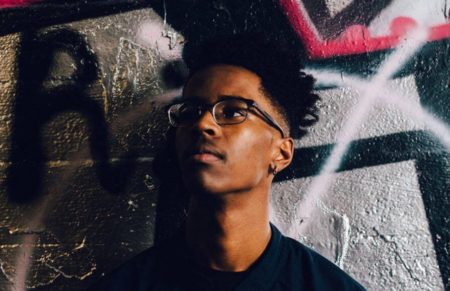 Brandon Durden (Atlanta, GA) landed a gig and got a firsthand taste of what goes into doing live sound within a theater environment:
“When I first started the chapter, my mentor, Wyatt Oates, introduced me to the world of live sound. We discussed what the experience was like and how with engineering, there are multiple avenues we can take with our skill and knowledge of audio. Fortunately, I was able to experience this myself when he helped me get a gig where I worked with GA Ferst Center for the Arts’ production team to help facilitate the show as a stage hand. There I met Joe, the sound guy, who showed me around his area and the various connections made between the stage, monitors, and console.”
I recorded my full experience on my Instagram under ‘GA Tech Work.’
Brandon Durden (Atlanta, GA) landed a gig and got a firsthand taste of what goes into doing live sound within a theater environment:
“When I first started the chapter, my mentor, Wyatt Oates, introduced me to the world of live sound. We discussed what the experience was like and how with engineering, there are multiple avenues we can take with our skill and knowledge of audio. Fortunately, I was able to experience this myself when he helped me get a gig where I worked with GA Ferst Center for the Arts’ production team to help facilitate the show as a stage hand. There I met Joe, the sound guy, who showed me around his area and the various connections made between the stage, monitors, and console.”
I recorded my full experience on my Instagram under ‘GA Tech Work.’
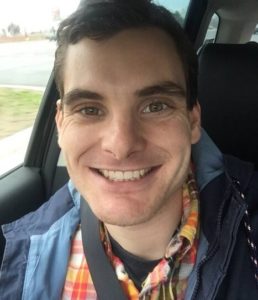 Film Connection Christian Kenney (Virginia Beach, VA) is so stoked with his mentors’ work he’s having trouble focusing:
“I loved working with Ironclad. I’m glorifying their name while I speak. I’m loving how much they pay into their movies. They look so good on the computer. I’m liking how much they gloat and gleam about how good their movies are. Their wrap-around orbiting and slow motion effects are the dreamer’s dreams, I’m so clamoring for more and more. They keep giving me work to do but I love their stuff so much I just want to watch it and not do the cropping and editing they need from me. I love their work. I love their work much more than I love my own.” Alrighty Christian. We’re glad you’re having fun and hope to see your work soon!
Film Connection Christian Kenney (Virginia Beach, VA) is so stoked with his mentors’ work he’s having trouble focusing:
“I loved working with Ironclad. I’m glorifying their name while I speak. I’m loving how much they pay into their movies. They look so good on the computer. I’m liking how much they gloat and gleam about how good their movies are. Their wrap-around orbiting and slow motion effects are the dreamer’s dreams, I’m so clamoring for more and more. They keep giving me work to do but I love their stuff so much I just want to watch it and not do the cropping and editing they need from me. I love their work. I love their work much more than I love my own.” Alrighty Christian. We’re glad you’re having fun and hope to see your work soon!
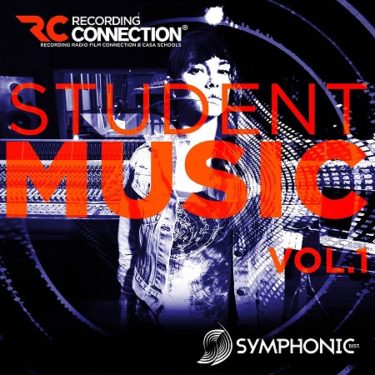 Through learning with the Recording Connection, students gain an understanding of how to write, record, and mix a song from scratch. Now, students will be given the opportunity to have their music distributed across all major music streaming platforms via our awesome partnership with Symphonic Distribution!
This is a great opportunity for our apprentices to showcase their craft and the skills they’ve acquired learning inside of professional recording studios as externs and to deepen their understanding of how to use companies like Symphonic Distribution for future releases that can move their careers forward.
We’re always looking out to promote great student music. We’ll be showcasing more student talent in coming releases, so drop into our ‘Student Music Mixtape’ series… This is only VOL 1!
Stream Student Music Mixtape, VOL 1.
— by Hunter Bretting, Marketing Manager.
Through learning with the Recording Connection, students gain an understanding of how to write, record, and mix a song from scratch. Now, students will be given the opportunity to have their music distributed across all major music streaming platforms via our awesome partnership with Symphonic Distribution!
This is a great opportunity for our apprentices to showcase their craft and the skills they’ve acquired learning inside of professional recording studios as externs and to deepen their understanding of how to use companies like Symphonic Distribution for future releases that can move their careers forward.
We’re always looking out to promote great student music. We’ll be showcasing more student talent in coming releases, so drop into our ‘Student Music Mixtape’ series… This is only VOL 1!
Stream Student Music Mixtape, VOL 1.
— by Hunter Bretting, Marketing Manager.

RRFC is education upgraded for the 21st century.
Get the latest career advice, insider production tips, and more!
Please fill out the following information, and RRFC Admissions will contact you to discuss our program offerings:
Stay in the Loop: Subscribe for RRFC news & updates!
© 2025 Recording Radio Film Connection & CASA Schools. All Rights Reserved.

